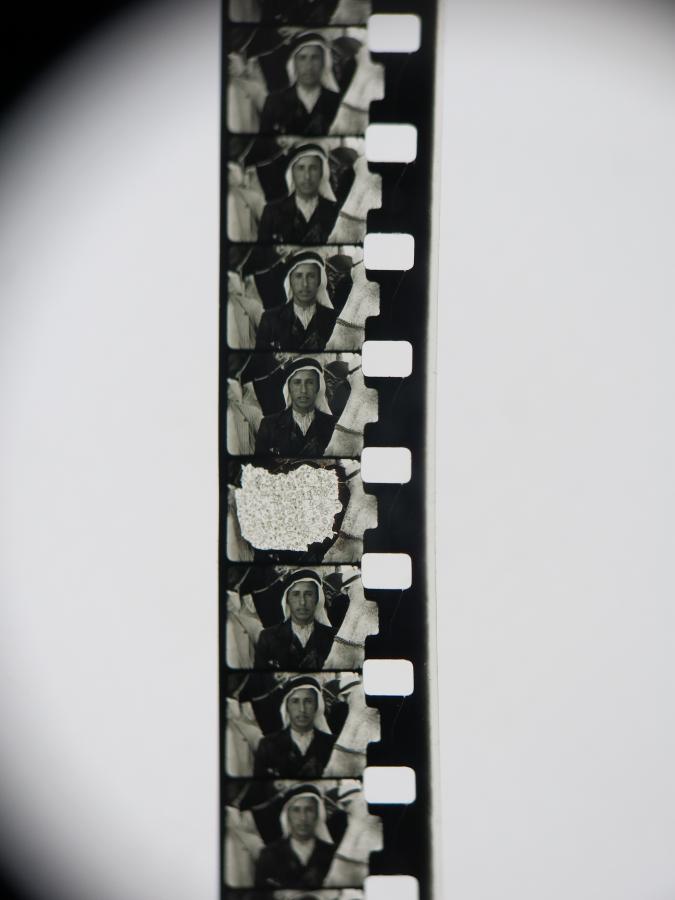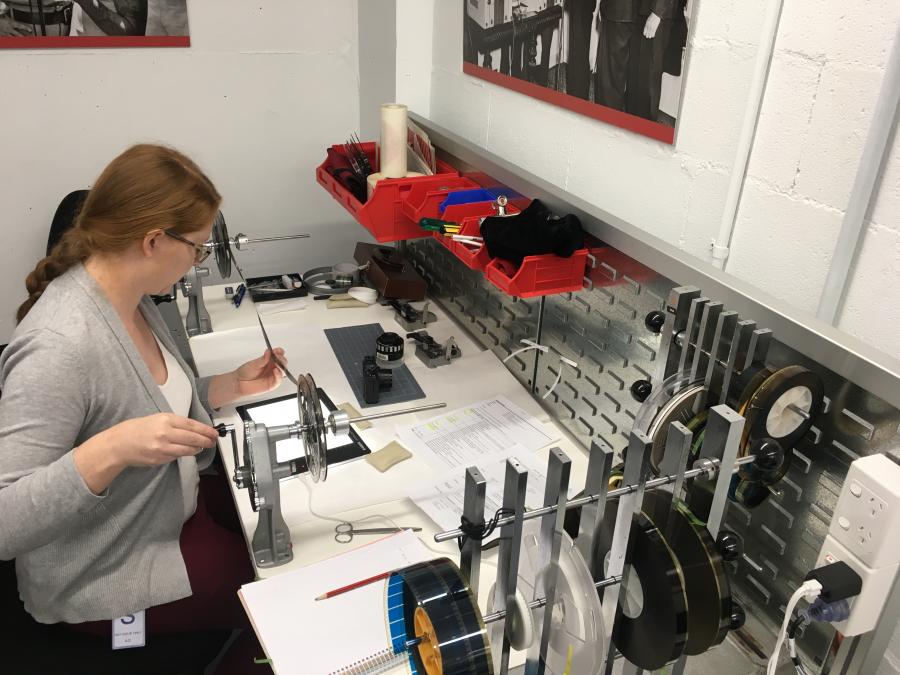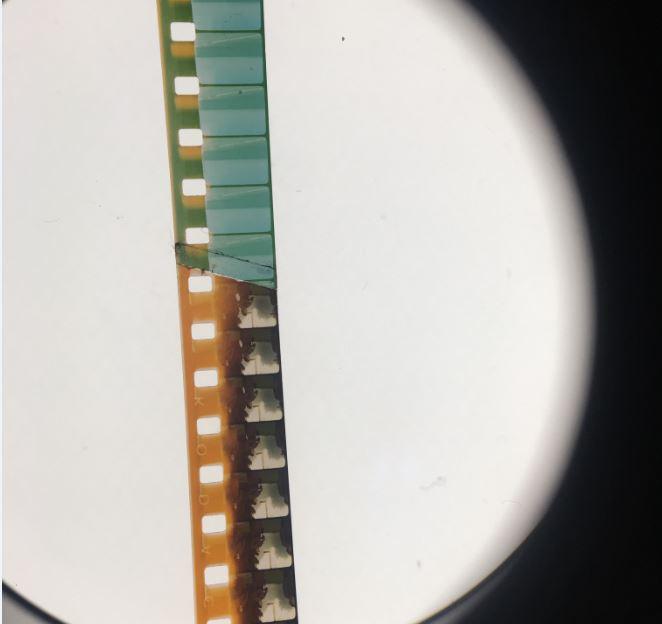8mm film - Conservation and Digitisation
The Australian War Memorial’s collection of 8mm film dates to the 1930s and is a significant record of Australia’s military history. The fragile nature of this aging media means that without proper attention a part of our national story could easily be lost.
Memorial staff have been working to assess, document, conserve and digitise our collection of standard and Super 8mm film material so that it can be preserved and made available to the public online.

Projector burn resulting in loss of the image.
section of 8mm film from a home movie taken by an unknown member of the 2/1 Battalion in Syria and Palestine, 1942.
F04792
Conservators examine the films on a film winding bench, running the film gently between their fingers to check and document the type and number of splices, damage to perforations, buckle and wave, silvering of the image, dye fade, discolouration, dirt, concretions, projector burns (caused by heat from the globe when the film was paused), excess and deteriorating adhesive, abrasion, scratches and gouges, creases, ferrotyping, plasticiser migration, brittleness, chemical residue, crazing, emulsion lift, finger prints, tears, streaking, and tide marks.
This examination is time consuming and often requires a magnifier. Given this, information such as film format, footage length, film edge code and print through edge code, and original information on head and tail leaders is often also captured, keeping unnecessary handling of film material to a minimum.

Conservator Maree Swann using a manual film winder to inspect the condition of 8mm film from the Memorial collection.
Conservators also measure levels of film base shrinkage, which takes place as plasticisers and acetic acids are displaced over time. Acetic degradation (Vinegar Syndrome) is also measured. While Vinegar Syndrome is autocatalytic and cannot be reversed, it can be slowed down through cold and freezer storage. Collections with a high rating are isolated and rehoused in material that adsorbs acetic off-gassing to minimise risk.
Conservation treatment of deteriorated film is diverse and no film is the same. Over the course of their lifetime, films have been manually handled and projected many times, and stored in different environments. Each film displays a unique deterioration pathway. Some types of deterioration, such as extreme buckle and wave, curl and shrinkage of the cellulose acetate base, can make the film difficult to run through the scanners and digitise. Other collections that have magnetic stripe present, or are leaching dyes, cannot be run through Particulate Transfer Rollers attached to film winders and scanners to collect dust, lint and particulates on their urethane coating.
As well as keeping a watchful eye for mould and pest activity, conservators collect samples of unusual film types to test for radiation and toxic chemicals – in the past some films were toned with uranium, selenium, copper, vanadium, sulphide, and iron.
Once digitised, films receive a “preservation wind” (or “loose wind”) to allow acetic acids and vapours to dissipate equally across the film base, and to mitigate ferrotyping and film “blockage” (when the film sticks together and can’t be unwound). All films are then relocated to the AWM 4⁰C cold store for long-term storage. Over time, conservators will continue to inspect and monitor films in the cold store, which will continue to deteriorate even in low light, temperature and relative humidity environments.

An example of brittle and soiled cement splice, and a change in film stock, on a piece of 8mm film from a home movie of the coronation tour of HMAS Sydney in 1953.
F03494